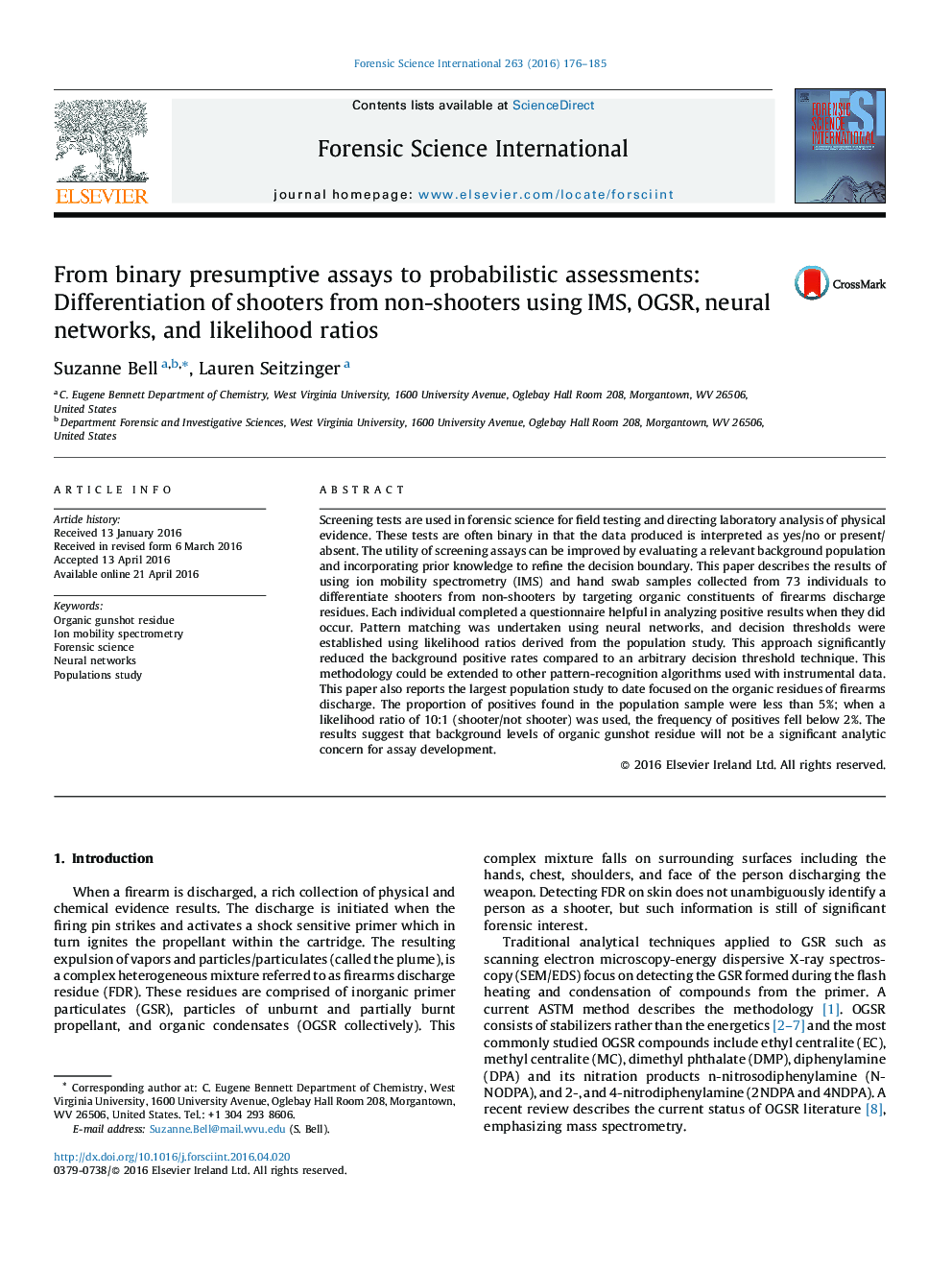| کد مقاله | کد نشریه | سال انتشار | مقاله انگلیسی | نسخه تمام متن |
|---|---|---|---|---|
| 95150 | 160415 | 2016 | 10 صفحه PDF | دانلود رایگان |
• Ion mobility spectrometry (IMS) was used to characterize skin swabs for the presence of organic gunshot residue.
• A population of 73 individuals was studied and included survey responses on firearm use.
• Neural networks were successful in classifying shooters from non-shooters.
• Neural network outputs were used to model distributions and calculate likelihood ratios (shooter/non-shooter).
• Background population positives and false positives was <6%.
Screening tests are used in forensic science for field testing and directing laboratory analysis of physical evidence. These tests are often binary in that the data produced is interpreted as yes/no or present/absent. The utility of screening assays can be improved by evaluating a relevant background population and incorporating prior knowledge to refine the decision boundary. This paper describes the results of using ion mobility spectrometry (IMS) and hand swab samples collected from 73 individuals to differentiate shooters from non-shooters by targeting organic constituents of firearms discharge residues. Each individual completed a questionnaire helpful in analyzing positive results when they did occur. Pattern matching was undertaken using neural networks, and decision thresholds were established using likelihood ratios derived from the population study. This approach significantly reduced the background positive rates compared to an arbitrary decision threshold technique. This methodology could be extended to other pattern-recognition algorithms used with instrumental data. This paper also reports the largest population study to date focused on the organic residues of firearms discharge. The proportion of positives found in the population sample were less than 5%; when a likelihood ratio of 10:1 (shooter/not shooter) was used, the frequency of positives fell below 2%. The results suggest that background levels of organic gunshot residue will not be a significant analytic concern for assay development.
Figure optionsDownload high-quality image (194 K)Download as PowerPoint slide
Journal: Forensic Science International - Volume 263, June 2016, Pages 176–185
